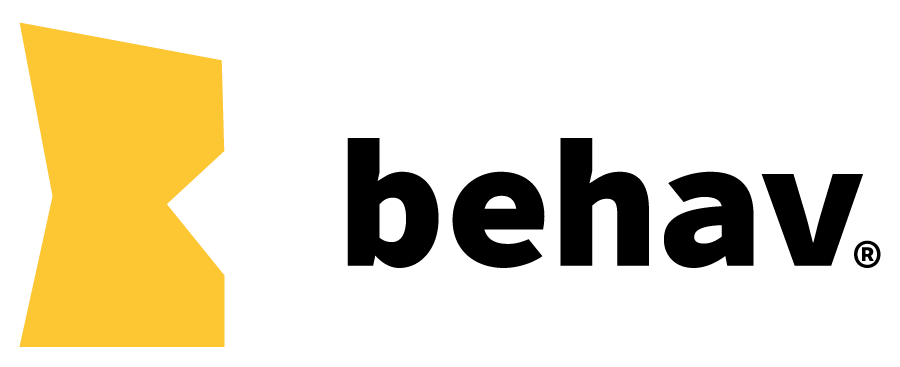Why translating the word 'Behaviour' matters more than you think
Why translating the word 'Behaviour' matters more than you think in projects
Written by Lauren Alys Kelly
Ever been in a project meeting where everyone nods in agreement about changing "people’s behaviour"?
It seems unanimous, but what if I told you that everyone might be on different pages?
Let’s uncover why getting 'behaviour' right is crucial for effective change management.
Unpacking the Many Faces of 'Behaviour'
At its core, 'behaviour' sounds straightforward.
But is choosing tea over coffee the same as committing to a new lifestyle?
Nope!
Here's the thing: the term 'behaviour' can be as specific as clicking a button on a screen, or as broad as cultural influences driving our daily choices.
Navigating its many meanings without a guiding light can be tricky. It’s why we have created the Behaviour Definition Cards, which act as guidebooks in understanding the complexities of 'behaviour' – from how we each define it, to how we bring everyone on the same page.
The Ripple Effect of Misinterpreting 'Behaviour'
Differing interpretations can stealthily sabotage our best efforts.
Here’s how:
Chasing Shadows: Without a clear understanding, teams can end up pursuing misaligned goals.
The Communication Maze: Discussions become longer and more confusing when everyone interprets 'behaviour' differently.
Missing the Mark: Misinterpreting behaviour can lead to targeting wrong issues, wasting both time and resources.
OK, so we know translating the word ‘behaviour’ is important. But what are the definitions you should look out for?
It helps to think of the definitions of behaviour within 6 qualities of understanding and changing behaviour:
The 6 Qualities of Behaviour
These are best understood as six core qualities:
Scope:
The scale & granularity of Behaviour. Think micro vs. macro. On one end, there's the 'Direct Actions' - these are the detailed actions, like sending an email or attending a meeting. Then, we've got the 'Recurring actions,' the broader habits that might span weeks, months, or even years. It's about understanding actions at every level and ensuring we're addressing the right scale for maximum impact.
Awareness:
Whether people act with intent & consciousness: Sometimes we act with clear intention, other times it's purely reactive. Recognising the difference between 'Purposeful Actions' and 'Automatic Reactions' is key. This distinction allows us to identify whether actions are stemming from conscious decisions or automatic responses. It's the difference between addressing root causes or mere symptoms.
Depths:
The iceberg principle applies here. While we see the 'Visible Responses' - the actions and words - there's a myriad of 'Internal Worlds' lurking below the surface: feelings, thoughts, emotions. Our strategies need to account for both. After all, understanding the why often lies beneath the surface.
Causality:
In the world of behaviour, there's cause and there's effect. Sometimes, behaviour is an outcome, a result of various factors. Other times, it's the cause that leads to various results. By distinguishing between the two, we get a clearer roadmap of where to intervene.
Focus:
Here, it's about clarity. Are we simply trying to understand behaviour as it is ('As-is Behaviour'), or are we setting an ideal, a standard to which behaviour should adhere ('Ideal Behaviour')? Knowing our aim is half the battle.
Drivers:
Ever noticed how behaviour shifts from one setting to another? That's because our actions are deeply intertwined with culture and context. Whether it's societal norms or the ambiance of a meeting room, understanding the 'We Driven' and 'Oversee Driven' nuances is a game-changer.
The 12 definitions of behaviour:
Direct Actions: One-off, precise, detailed actions.
Recurring Actions: Broad, repeatable tendencies or habits observed over time.
Purposeful Actions: Addresses intentional actions that are often under conscious control and are done with a specific purpose in mind.
Automatic Reactions: Focuses on automatic reactions to external stimuli without active, conscious decision-making involved.
Internal Worlds: Concentrates on internal processes like thoughts, feelings, and emotions that may not be directly observable.
Visible Responses: Encompasses actions that are visible and measurable, like physical actions or spoken words.
Behaviour as Outcome: Sees behaviour as a result of other factors, helping to explore causality.
Behaviour as Cause: Focuses on behaviour as an influencer that leads to specific results.
As-is Behaviour: Seeks to understand and describe behaviour as it naturally occurs.
Ideal Behaviour: Focuses on setting or adhering to an expected or wanted behaviour.
We Drivers: Addresses variations in behaviour based on cultural factors, traditions, and customs.
Oversee Drivers: Concentrates on the impact of immediate environments, situations, or settings on behaviour.
Steps Towards a Unified Behavioural Language
So, how do we get everyone talking the same language?
Dialogue, Not Monologue: Kickstart open discussions. Let teams share their interpretations of 'behaviour'. This not only bridges gaps but also enriches the team's collective understanding.
Real-world Lens: Dive into case studies. Analysing real-world scenarios helps highlight different interpretations within your business setting and project scopes. It paves the way for relatable clarity.
Feedback Loops: Encourage feedback after projects. It's the reality check we often need to understand if our perception of 'behaviour' hit or missed the mark.
Adapting to an Ever-Evolving Landscape
'Behaviour' isn’t static. As teams grow and industries evolve, our understanding should too:
Continuous Learning: Keep up with the latest in behavioural science. A new study might just offer a fresh perspective or tool for your arsenal.
Collaborative Growth: Partner with institutions or universities. This keeps the team's understanding of 'behaviour' both current and expansive.
Let’s wrap up.
'Behaviour' isn’t just a term. It's a multifaceted concept, with layers waiting to be explored. By recognizing its complexities and fostering a shared understanding, change management doesn't just become smoother – it becomes transformative.
The next time 'behaviour' pops up in a meeting, remember: it’s more than just semantics. It’s the foundation of impactful change.
